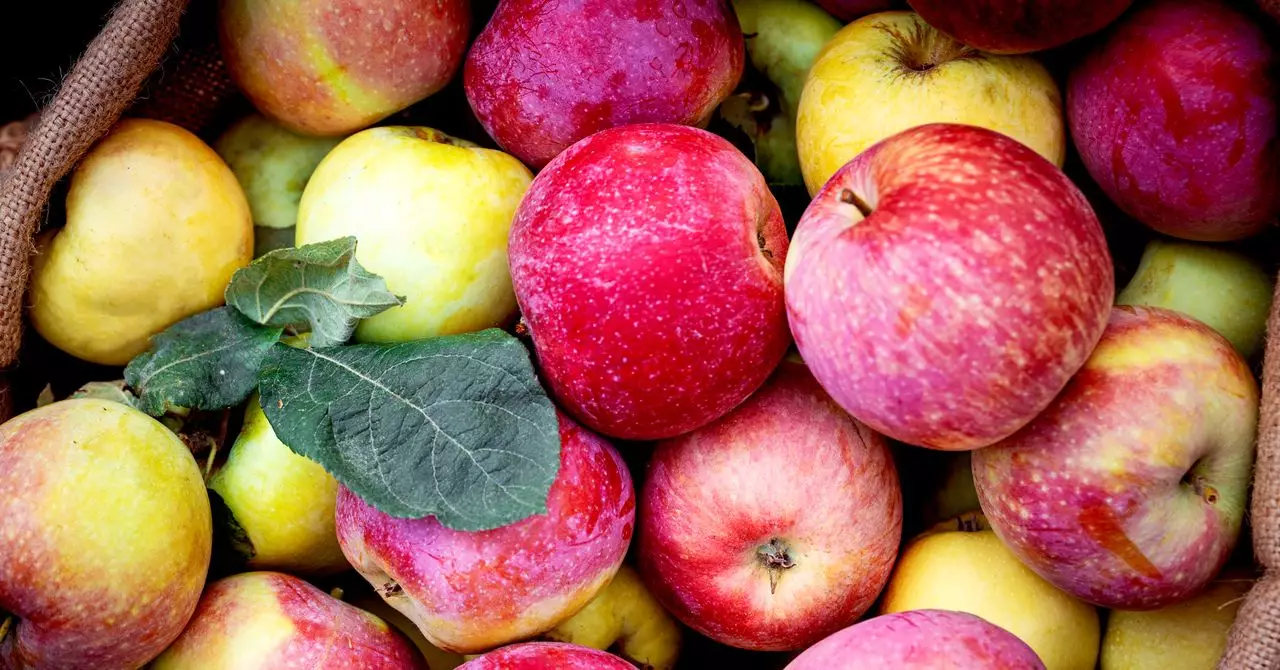When one thinks about quintessential American foods, apple pie often comes to mind, but the often overlooked backstory of apple juice reveals a complex web of international trade intricacies. The irony is stark: while apple juice is a staple in American households, a significant portion of this beloved beverage is imported, particularly from China and increasingly from Turkey. With the recent wave of tariffs imposed under the Trump administration, the pricing and availability of apple juice are transforming before our eyes, and the implications for consumers cannot be overstated.
The Price Tag of Protectionism
The rising costs and potential scarcity of apple juice and related products represent more than just a minor inconvenience for families. Christopher Gerlach, an executive with the U.S. Apple Association, highlights that the wholesale price of apple juice concentrate has seen a staggering increase of 33 percent in just one year. This dramatic rise casts a long shadow not only over apple juice, but also on a myriad of products that use concentrate as a base, from mixed fruit juices to a plethora of children’s snacks. As the price climbs, the impact reaches families who may find it increasingly difficult to afford these once accessible staples.
The crux of the situation lies in the Trump administration’s aggressive tariff policies, which have altered the landscape of global trade to an unprecedented degree. A hefty 145 percent tariff on Chinese imports has exacerbated the issue, not just for apple juice but across a wide range of products. It’s vital to recognize how these tariffs ripple through the economy, inflating costs and making everyday goods less affordable. The U.S. consumer is caught in the crosshairs of a trade war, and apples aren’t exempt from the fallout.
The Historical Context: From Orchards to Imports
While apple-growing traditions run deep in the United States, the country’s apple juice supply chain tells a different story. Surprisingly, apple juice production is not a top priority for U.S. farmers, who typically concentrate on the fresher fruit market, where profit margins are higher. The USDA has tracked a noticeable shift, with America exporting about 16 million gallons of apple juice while importing a staggering 430 million gallons. This lopsided trade balance underscores the reliance on international sources, particularly from China, where apple orchards have flourished since the 1980s as farmers sought to diversify their crops.
However, recent years have seen Turkey stepping into the spotlight, rapidly becoming a formidable contender in the apple juice concentrate field. In the past year, Turkey commanded a 39 percent share of U.S. concentrated apple juice imports, overtaking China, which now accounts for only 31 percent. This transition signals a pivotal moment in the American apple juice industry, reshaping sourcing dynamics and putting pressure on previously reliable supply chains.
Market Shifts and Consumer Consequences
As tariffs have compelled consumers to pivot in their purchasing behavior, a noticeable shift is evident. At the beginning of this year, importers scrambled to buy apple juice concentrate from China before tariffs took effect, resulting in a temporary spike in sales. The consequence of this rush is now clear: sales from China have plummeted, while Turkey’s exports to the U.S. have soared. The figures speak volumes; during the last week of April, Turkey sent over twice as much apple juice concentrate to the U.S. as China.
As these dynamics continue to evolve, the implications for American families grow increasingly concerning. With a portfolio of products reliant on apple juice concentrate, its rising costs will undoubtedly filter down, affecting everything from beverages served at lunch to snacks packed in children’s lunchboxes.
In the face of all this upheaval, the simple joy of enjoying a chilled apple juice may soon carry the weight of economic considerations, reflecting broader themes of globalization, national policy, and the consumer’s pocketbook. The thought of a household staple becoming less accessible is disheartening, but it encapsulates the far-reaching effects of tariffs and trade policies in today’s world. The line between domestic abundance and international dependence grows thinner, and amidst this, consumers must adapt to an ever-changing food landscape.

